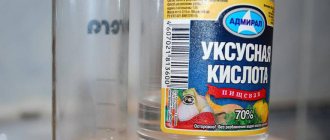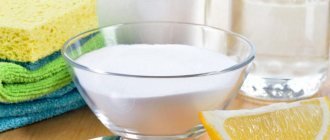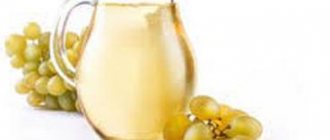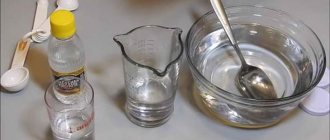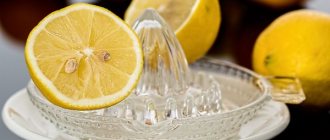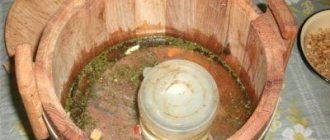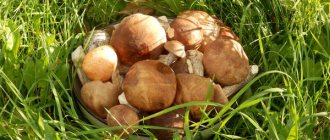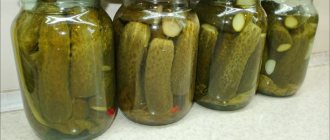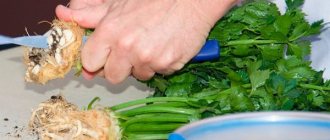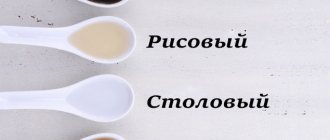Acetic acid is used in a large number of culinary recipes. It can also be used in the preparation of various medicinal mixtures according to folk schemes. Vinegar of varying concentrations can be used as an ingredient. Sometimes 70 percent is required, which is sold ready-made in the store. Sometimes a 3-, 5-, 7-, 9 percent solution is needed. To obtain it, you need to dilute the liquid that is already available. This way you can get a product suitable for any of your purposes. In this article you will learn how to dilute 70 percent vinegar.
Photo from the site: womenssecretszone.ru
What does vinegar essence consist of?
70% vinegar essence consists of acid and ordinary water. Of the total volume, 7 parts are directly acid, and 3 parts are water. Sometimes the ratio is different, which is shown on the label. The product is not used in this form as it is too concentrated. Table vinegar, which is sold in the store, is already diluted to a certain extent. You may ask, why then dilute the essence if it is possible to purchase a ready-made version? The answer is simple: it’s more economical. From one tea-sized spoon you will get a whole glass of already diluted table vinegar.
Keep the essence out of the reach of children. They can drink a concentrated solution, which will cause burns to the mucous membrane of the throat and damage to the esophagus.
In the store you can find table vinegar of different concentrations. But there is no guarantee that you will immediately find exactly the product you need. It is not worth buying 3% vinegar instead of 9% vinegar. It’s better to dilute the essence yourself to the required concentration.
Photo from the site: www.liveinternet.ru
Precautionary measures
To obtain 6% vinegar from 70% vinegar, you must take care of your safety and the safety of your loved ones. Vinegar essence should be stored:
- in places inaccessible to children;
- only in original packaging with appropriate warnings;
When diluting the essence to make 70 percent 6% vinegar :
- the use of gloves is mandatory;
- inhalation of concentrated vinegar vapors is unacceptable;
- the order of infusion is only the essence into the water, but not vice versa!
How to breed?
Dilute 70% acetic acid with water. They do this in accordance with the proportions. They are unique for a specific solution. People with mathematical abilities will quickly figure out how to do everything. For those who didn’t particularly like to count at school, there is a detailed table.
First formula
In order to correctly calculate the proportion, decide on the amount of vinegar you need. Convert it to grams. This will be the end result. To get it, you need to take the original amount of vinegar essence, multiply it by the percentage of the available concentration and divide by the percentage of the desired concentration. What emerges is a unique formula that is accurate and practical.
Photo from the site: www.liveinternet.ru
Second formula
If the first option seems difficult to you, you can try another formula, which is also quite easy to use.
How to dilute vinegar 70% and find out how much essence you need to take? The amount of initial liquid will be equal to the required concentration of the solution, multiplied by the final volume required in a particular case, and divided by the initial concentration. Thus, you can calculate how much essence to take to get the required amount of table vinegar.
When diluting vinegar essence, make sure that it does not get on the mucous membranes of the eyes. Also, try not to breathe in the vapors from this product. All this is unsafe!
Acetic acid must be diluted in a glass container. First, water is poured into it, and then vinegar essence is added.
Photo from the site: www.liveinternet.ru
Rules for preparation and use
Acetic acid is a compound of 30 to 70% prepared by distilling fermented wine, fruit juices, or a developed chemical product in a laboratory. The table below describes in detail how the process of diluting to 9% vinegar occurs. The percentage is calculated based on the amount of liquid with which it was diluted.
Before use, you need to familiarize yourself with the basic recommendations in detail:
- Be sure to wear thick gloves to avoid burns. If liquid gets on your skin, immediately run it under running cold water.
- We pour acid into water, and not vice versa.
- We pre-boil it and cool it completely.
- Pour the resulting solution into glass containers, close the lids and be sure to note the percentage so as not to confuse it later.
- Containers should be tightly closed, as vinegar evaporates very quickly in the air. Then store in a cool, dark place.
- Ingestion of vinegar causes an immediate painful burn to the digestive tract. Just 50 ml can lead to severe poisoning, subsequently death within 24 hours. Therefore, it must be kept out of the reach of children.
- When using acetic acid instead of bleach, you must wear a respirator or gauze bandage. The pungent odor of the concentrated solution causes dizziness.
Important! Before diluting, be sure to ventilate the room and close it so that children cannot enter there. Surfaces can be treated in a room with adequate ventilation.
Some ready-made calculations
You don’t have to rack your brains, but use ready-made, calculated proportions. We will give you the most popular of them as an example.
- If you need 30% vinegar, then dilute the essence using a ratio of 1:1.5.
- To prepare a 10% solution, combine 1 part acid with 6 parts water.
- How to dilute 70 vinegar to 9 percent? To get this result, use a ratio of 1:7.
- To make 8 percent vinegar, mix 1 part vinegar and 8 parts water.
- For a 7% solution, a proportion of 1:9 is needed.
- If you combine water and acid in a ratio of 11 to 1, you get a liquid with a concentration of 6%.
- The ratio of vinegar essence and water in a ratio of 1:13 will give a 5% vinegar solution.
- A proportion of 17 to 1 part will give vinegar with a concentration of 4%.
- A 3% solution is made from 22.5 parts water and 1 part 70% vinegar essence.
Information on how to dilute 70 percent vinegar can be presented in a convenient table. By hanging it in the kitchen, you can always use ready-made calculations in a timely manner.
Kinds
The acetic solution is formed through fermentation. Depending on what products it is made from, there are several varieties of it and each has its own calorie content:
- table 9% – 32 kcal;
- apple 3% 11 kcal, and 6% – 14 kcal (prepared from fermented fruit juice);
- rice – 54 kcal (in addition to the main product, the recipe uses yeast, sugar and egg white);
- wine – 14 kcal (grape pulp, sugar and boiled water);
- balsamic – 88 kcal (grape juice, sugar and water).
Making 9% vinegar from essence at home is not as difficult as it seems. You just need to be guided by the table and useful tips. But it is better to do this in extreme cases, so as not to expose your body to danger.
How to dilute 9% vinegar to 6%?
If it’s more or less clear how to dilute 70% essence, then what about already diluted vinegar that needs to be diluted further? In this case, you need to take one part water for two parts of essence. That is, two glasses of 9 percent vinegar should be diluted with one glass of water. This will yield three cups of 6 percent vinegar.
Photo from website: fb.ru
You can make calculations in grams. In this case, for every 100 grams of 9% vinegar you need to take 50 grams of water, and you will get a 6% table solution. This way, you will always know how to dilute 9 percent vinegar. You won't need to use complex formulas every time.
Sometimes the solutions are interchangeable. For example, if you need to use 6% vinegar, but you only have 3%, you can add that too. It’s just that the amount of such additive will be higher. Ultimately, the volume of the active substance will be the same.
Using the same principle, you can answer the question “how to dilute 9 vinegar to 3 percent?” To do this, you will need to dilute one glass of vinegar essence with two glasses of water.
Using these formulas, you can determine how to dilute 70 percent vinegar to 20 percent.
Can the solution be stored?
Acetic acid is a known preservative. Thanks to it, the preparations stay in jars all winter and do not spoil. So why not store essence water? If 9% vinegar is used frequently, you can dilute 70% acid for future use.
Follow the storage rules:
- Use a glass container or, in extreme cases, a plastic one. Metal containers are not suitable for storing acidic solutions.
- Close the bottle tightly with the cap. The issue of tightness is very important. If the lid allows air to pass through, the liquid will gradually evaporate.
- Store the solution in the refrigerator, pantry, or kitchen counter. The main thing is that the temperature does not go beyond -3 to +35 °C.
- If a kitchen cabinet is used, it is important that it is located away from the stove.
- The vinegar solution must be protected from direct sunlight. Simply storing it on the table is wrong.
- The shelf life of the solution is approximately 24 months. You need to count from the date of manufacture indicated on the bottle.
If you often make a 9% vinegar solution from acid, mark the required level of water and vinegar on the container with a marker. Now, to dilute, you don’t have to weigh anything - you can navigate by the marks.
For what purposes are solutions of different concentrations used?
Diluted vinegar may be needed for medicinal purposes. With its help, the temperature is quickly reduced. This method causes less harm than antibiotics and other drugs. For compresses, use a 6 percent solution.
Photo from the site: sovetclub.ru
Traditionally, vinegar is used in cooking. It comes in very handy in a barbecue marinade. For such purposes, they also take the 6 percent option. The meat is soaked in it, seasonings are added and kept for some time. Vinegar makes the kebab tender.
Photo from website: satsis.info
For preservation, 9% table vinegar is more suitable. It ensures the safety of homemade “twists” and excellent taste.
Photo from the site: moikompas.ru
To season vegetable salads, mushrooms, dumplings and other dishes, use a 3% vinegar solution. It has a subtle taste, so it complements but does not overwhelm other products.
25% acetic acid is an excellent weed killer. By watering the soil with this solution, you will get rid of them for a long time.
Photo from website: dnpmag.com
Secrets and tricks for housewives
There are many problems that can be treated cheaply and easily with table vinegar:
- Oily surfaces. There is no need to buy expensive oven cleaners. It is enough to lightly moisten the walls and the inside of the door with table vinegar, leave for a while, and then clean. This way you can clean any surfaces that have oil stains.
- Greasy parquet. You can put it in order easily and without stress. Pour 4 cups of vinegar into an 8-liter bucket of water (half a cup per liter). Rinse the floor well - it will be perfectly cleaned of dirt and begin to shine. However, if the parquet is protected with wax, it is better not to use this method.
- Flowers in a vase. You can extend their life cycle with vinegar. Add 2 tbsp per liter of water. spoons. A beautiful bouquet will delight you for more than one day.
- Unpleasant odors. You can easily get rid of them by using vinegar. You need to leave a cup of vinegar in the room for several hours without covering it. In the future, to remove the smell of vinegar, open the windows.
- Lime in a kettle or saucepan. There is no need for purchased products that are practically unable to rid the kettle of multi-layered scale. Just pour a full kettle of water, add a tablespoon of vinegar and boil. The kettle will be completely clean.
- Dirty glass and windows. The best and cheapest glass cleaner is vinegar. Dilute a little vinegar with water and wash the windows. And then wipe dry with paper or a cloth that does not leave marks on the glass.
- Dirty metal surfaces. Take a couple of tablespoons of vinegar, add two drops of vegetable oil into the solution and clean the metal surface of dirt. This could be cutlery, decorative items, jewelry.
- Microorganisms, mold. Vinegar will also cope with such a difficult task successfully. Pour 100 grams of vinegar into a plastic jar with a spray bottle and treat the surfaces on which you notice mold. After some time, the procedure can be repeated. It is very useful to protect toothbrushes from bacteria in this way. Wet them with vinegar and rinse them after a while. Vinegar is a great way to neutralize old cutting boards and kitchen countertops.
- House ants. Vinegar is great at repelling these insects. It is necessary to treat traces and “ant paths”. Believe me, they won't like it at all.
- Brass. To make objects made of brass shine, wipe them with a cloth soaked in vinegar.
- Dried paint. After the repair, there are good brushes left, which would be nice to use again. It’s very easy to remove dried paint from them - just soak the brushes in vinegar for half an hour.
- Stains on clothes. You need to moisten the stain with vinegar and wash the item of clothing in the washing machine. It works especially well on sweat and deodorant stains.
- Price tags attached. It's a shame when a new item is practically ruined by the price tag that was firmly stuck to it in the store. Moisten a cloth or sponge with vinegar and gently apply it to the pasted paper for a while. Then it can be easily removed from the surface, and no traces will remain.
- Clogged pipes. An excellent and cheapest product that works no worse than expensive ones. Pour baking soda into the drain hole in the sink, then pour vinegar into the drain. There will be a reaction and foam will appear. Everything here depends on the degree of clogging of the pipe. You can get by with a tablespoon of baking soda and a couple of tablespoons of vinegar. In especially difficult cases, you will need half a glass of soda and a whole glass of vinegar. Wait 15 minutes to half an hour, rinse the hissing and bubbling mass in the pipe with hot water.
Calculation formula
The essence is a strong solution of volatile substances. To obtain the concentration necessary for any purpose, you need to dilute the original substance with water.
Each case has its own proportions. One of the calculation options is based on the required amount of funds.
In this case, you need to do the following:
- Translate
required volume of product in grams. It should be taken into account that 70% acid contains 70% pure vinegar in 100 grams.Accordingly, in 100 grams of 9% of the composition there should be 9 g of pure substance.
- To calculate,
you need to multiply the required concentration of the solution (Cr.) with the final mass (Mit.) and divide the result by the concentration of the original product (Ki.p.).
If
take the required amount of essence as x, then we get the following formula x=(Cr.xMit.)/(Ki.p.)
If we consider the calculations using a specific example, then to obtain 100 grams of 9% product from 70% of the composition, the formula will look like this: x = 9x100/70 = 12.86 grams.
This option is convenient if you have a kitchen scale. From the obtained result it is clear that to obtain 100 grams of 9% product you need to take 12.86 grams of 70% concentrate and bring this volume to 100 grams.
There is another calculation option for how to prepare the composition of the desired saturation (x):
To do this, it is enough to know the required concentration of the solution (Kr-ra) and the concentration of the acid (Kk-ty). The calculation formula is as follows: x=(Kk-ty)/(Kr-ra).
In numbers, the calculation looks like this: x=70/9=8. This figure means the number of parts, one of which is a concentrate. To obtain 9% of the composition you need 1 part of 70% essence and 7 parts of water (1+7=8).
Sometimes a different algorithm may be needed:
If you need to find out the amount of water (Kv) required to dilute a specific volume of acid (Kk-ty) to the required concentration (Kr-ra), then use the following formula: Kv = x = (Kk-tyh70%)/(Kr-ra ).
To dilute 5 ml of 70% concentrate (teaspoon) for 9% product you need 5x70/9 = 39 ml.
You can check the correctness of the calculations using the previous formula with the definition of parts. For a teaspoon of concentrate in 5 ml you need 7 tablespoons of water (7x5=40).
If necessary, you can replace the 9% acid with a product of lower saturation. The calculations for such a replacement are extremely simple.
It is necessary to divide the required percentage of saturation by the available one and use the resulting result for the calculation.
If the recipe calls for a teaspoon of 9% product, but the kitchen only has 6% concentrate, then you need to take one and a half times more (9:6 = 1.5).
Accordingly, with 3% product available, the dosage must be tripled (9:3=3). The amount of water in the recipe must be reduced.
If instead of a tablespoon of 9% vinegar you had to take 3 spoons of 3% composition, then you need to take 2 tablespoons less water (2-1=1).
Note! Regardless of the chosen calculation formula, you must remember the safety rules. You need to use glass containers, avoiding acid contact with the mucous membranes.
You need to use glass containers, avoiding acid contact with the mucous membrane.
